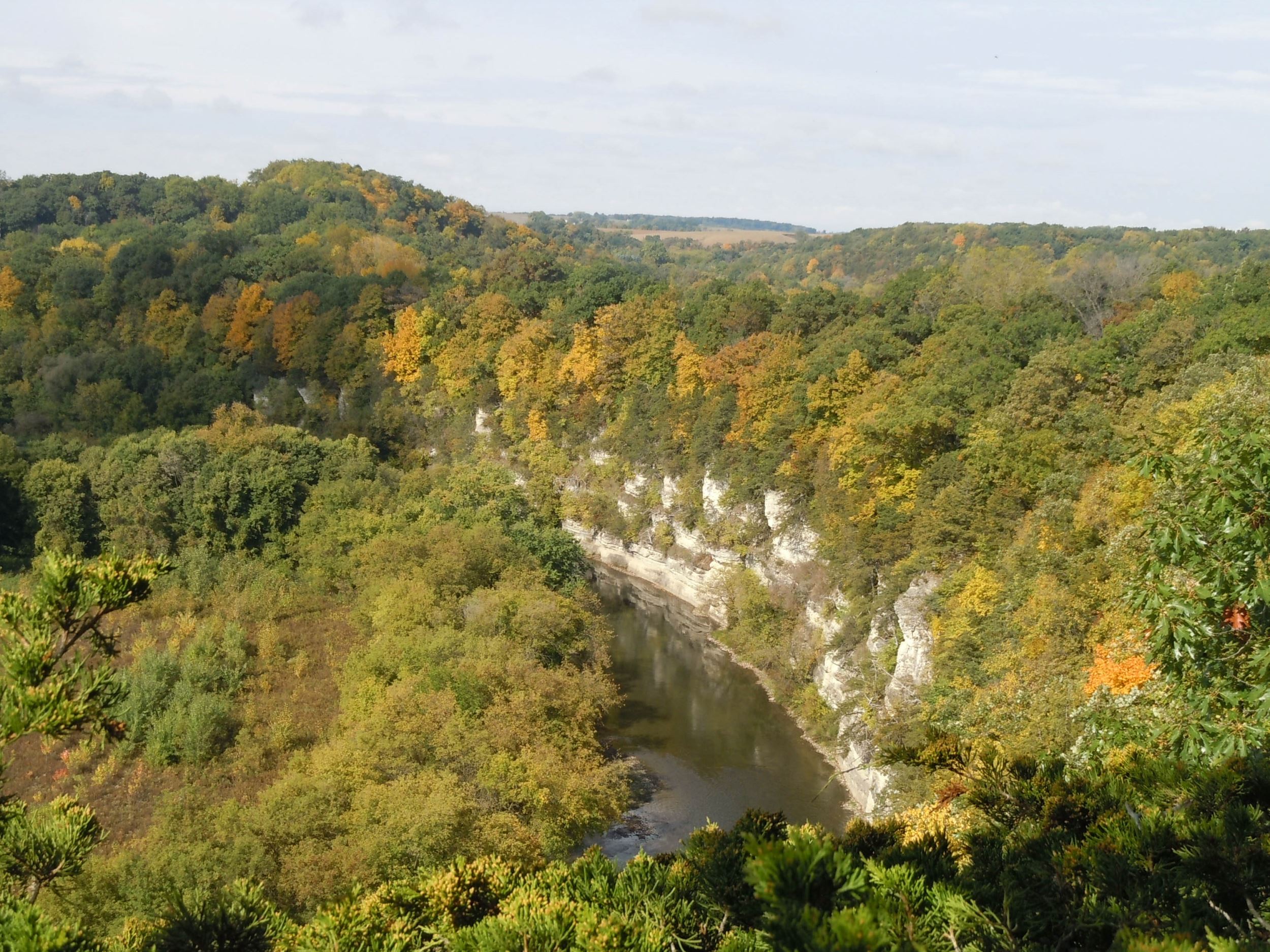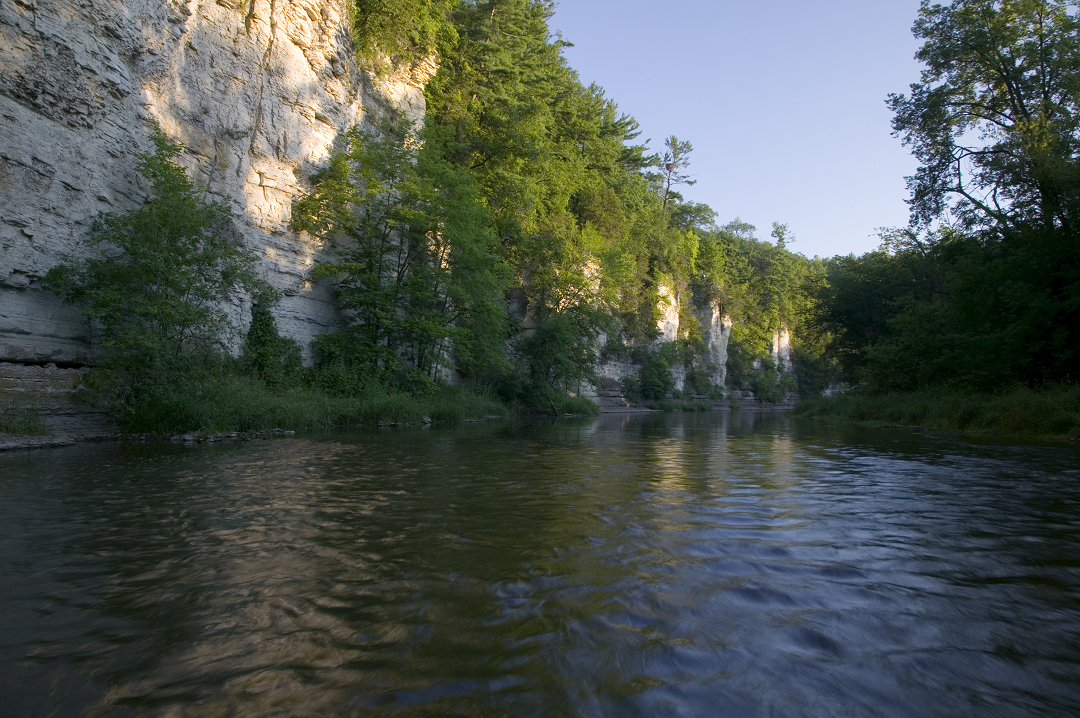What a View
By Andrea Piecarczyk on June 13, 2018 in Blog Posts
 In a state of gently rolling hills and far-away horizons, northeast Iowa is set apart by its dense woodlands and craggy limestone bluffs.
In a state of gently rolling hills and far-away horizons, northeast Iowa is set apart by its dense woodlands and craggy limestone bluffs.
Just as landforms like the Loess Hills or the Prairie Pothole region were shaped by glacial activity, the Driftless region is shaped by the lack thereof. It’s been nearly a million years since the last glaciers moved through the area. In that time, rivers have carved deep valleys through the forested landscape.
In doing so, these rivers — particularly the Upper Iowa River — created remarkable rock formations, including Chimney Rock. Rising steeply along the Upper Iowa, Chimney Rock has a stark regality that sets it apart. It is “probably the focal point of the canoe trip between Kendallville and Bluffton,” says INHF Conservation Easement Director Erin Van Waus. But few who come to paddle this stretch of river, one of the most scenic in the state, likely know that Chimney Rock is protected by a conservation easement held by INHF.
The Chimney Rock conservation easement includes a 16-acre strip of limestone bluff and steep bluff prairie along the Upper Iowa River. The easement is measured from the river’s thalweg — a term referring to the line drawn to join the lowest points along the length of a streambed, defining its deepest channel. Historically, thalwegs have been used to define legal boundaries along waterways.
Incredibly, Chimney Rock conservation easement — which turned 30 years old last June — was INHF’s first ever conservation easement. It was “a very defined and deliberate first easement,” said INHF President Joe McGovern. Chimney Rock set the tone for INHF’s continuing protection efforts in northeast Iowa: holding conservation easements has allowed INHF to build local relationships, making possible the quilt of conservation that blankets the area along the Upper Iowa River.

In 2001, the current owners of Chimney Rock decided to expand the protection of the area, discussing how best to do so with INHF staff. Brothers Bill and David Heine donated a new conservation easement on 100 more acres along the Upper Iowa, covering the existing Chimney Rock conservation easement and giving it an additional layer of protection. At the same time, the new easement (called Chimney Rock Ranch) also included wildlife habitat and a cold water trout stream.
Protecting Chimney Rock helped INHF’s fledgling conservation easement program understand how important conservation easements, though privately owned, were for public benefit. “There’s no greater public benefit than protecting scenic beauty along the most canoed river in Iowa,” McGovern said.
Preserving the Upper Iowa’s viewshed — a term that describes the visible landscape from a certain point — is a critical part of the river’s conservation. Likewise, northeast Iowa’s distinctive natural beauty is integral to the region’s identity. Viewsheds frequently provide more than striking scenery: they are a frame through which we understand and appreciate a landscape. Chimney Rock is truly unique; its degradation or destruction would be devastating.
“Iowa doesn’t necessarily have true wilderness, but we can still have wildness,” said McGovern, paraphrasing former Natural Resources Conservation Service Director and Iowa DNR Director Paul Johnson. “Rivers are our last vestige of wildness, especially the Upper Iowa.”